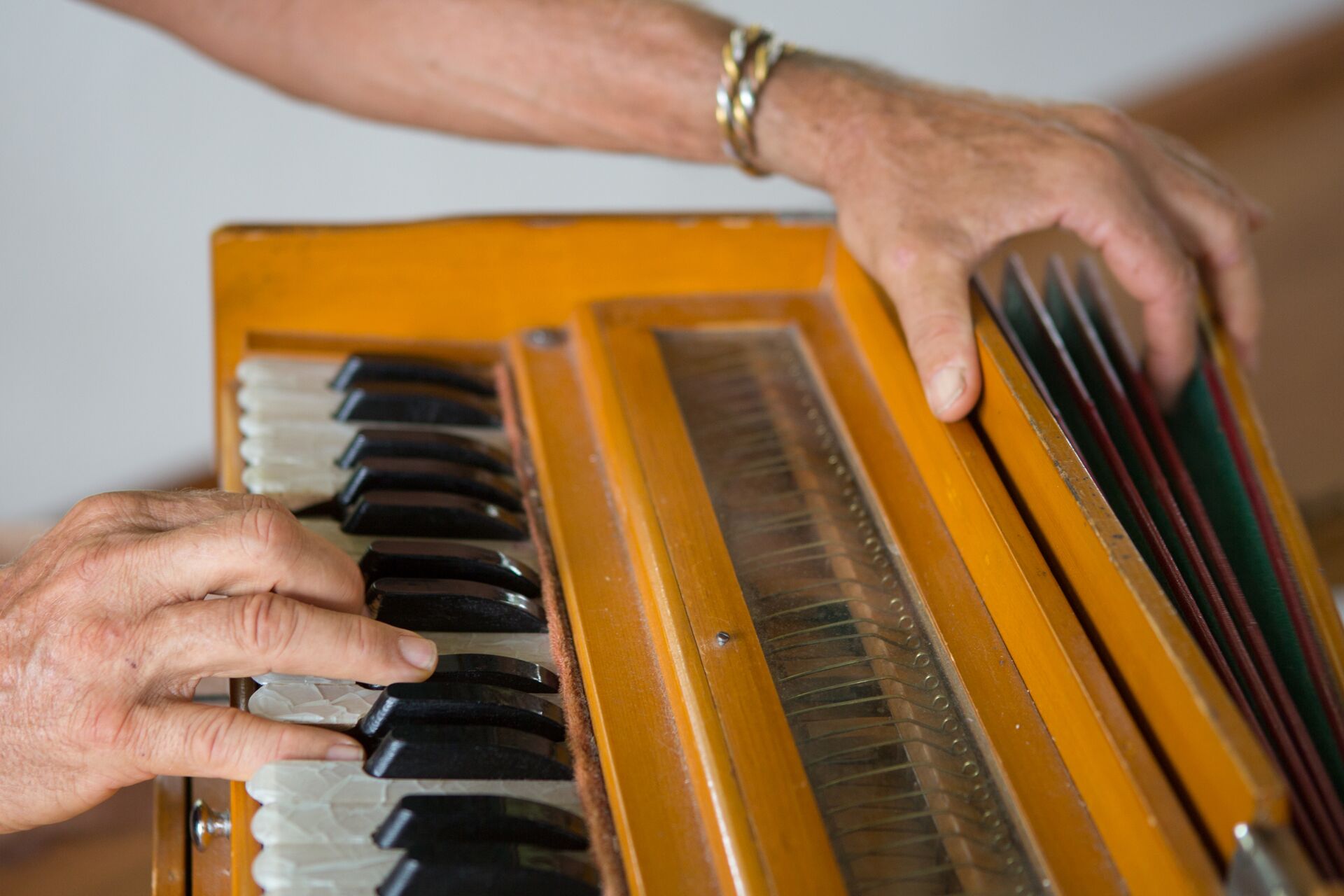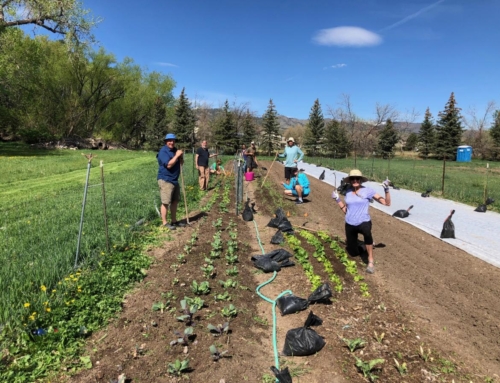Our first in-person kirtan in years last month was like coming home again: shared, beautiful music; deep silence; stillness. Over the years, this weekly practice has been perhaps our most effective community builder and we are glad to be back at it! In case you’ve never been to one, you may be wondering what kirtan is all about.
As evidenced by the discovery of the ancient neanderthal flute (replete with diatonic scale!), human beings have been sharing music for at least 50,000 years! Even today, group sharing of music shows up in literally every culture on the planet. Kirtan is a sanskrit word for chanting or sacred music and it comes in many forms. In Yogananda’s tradition, we use it as a way to open the heart and to deepen meditation.
Kirtan is not a spectator sport! Unlike viewing a concert, the purpose of a kirtan is to sing — and to put all your heart and soul into the singing! Allowing yourself the vulnerability of sharing your voice with others (which is difficult for many of us) is just the beginning of the many blessings of kirtan. The beauty and vibrations of the music, the resonance within the body, the steady, deep breathing required for prolonged singing, the continuity and simplicity of the chants; all these combine to ‘tune’ the nervous system to states of calmness, deep Peace and Joy. At a kirtan, it’s as if we meet each other somewhere else: out of body, out of time; and connect with each other in a very profound way.
Polestar kirtans share sacred music from many different cultures and spiritual traditions. Chants from Yogananda’s tradition are primarily in English but include Sanskrit pieces as well. We have learned and regularly sing music from Hindu, Christian, Sikh, Bhuddist, Native American, Hawaiian, and original sources. Voices are the primary instrument of choice but we also include harmonium and tablas, guitar, ukulele, autoharp, flute, and stringed instruments whenever they are available. (The year we also had a stand-up acoustic bass was one of our best kirtan rolls ever.)
As evidenced by the millions around the world who now regularly participate, enjoying kirtan is one of the most accessible musical experiences you can imagine. Learning the chants is easy since most of them are simple and repetitive. Learning to place your own voice, so that you can hear and feel it, and yet allow it to merge and blend with many other voices is not only a blissful experience but a wonderful metaphor for living.
If you’ve made it this far in this article and have never been to a kirtan, please give it a try. I know many people, even those who had no musical background and thought that they ‘couldn’t carry a tune’, that now regularly participate. It may take going a handful of times to develop an appreciation for and attunement to the music, but it is well worth exploring; many of us have had some of our deepest meditations in Kirtan.





